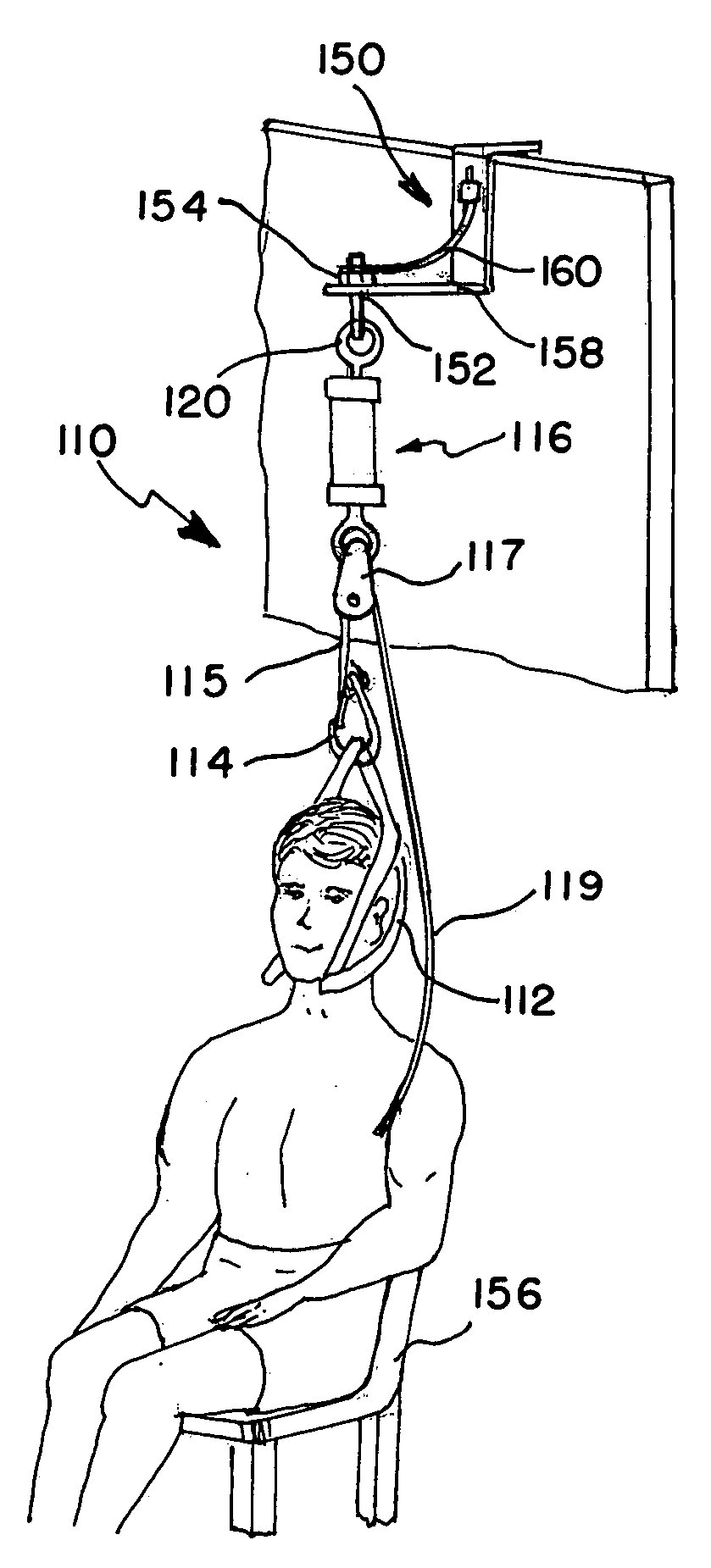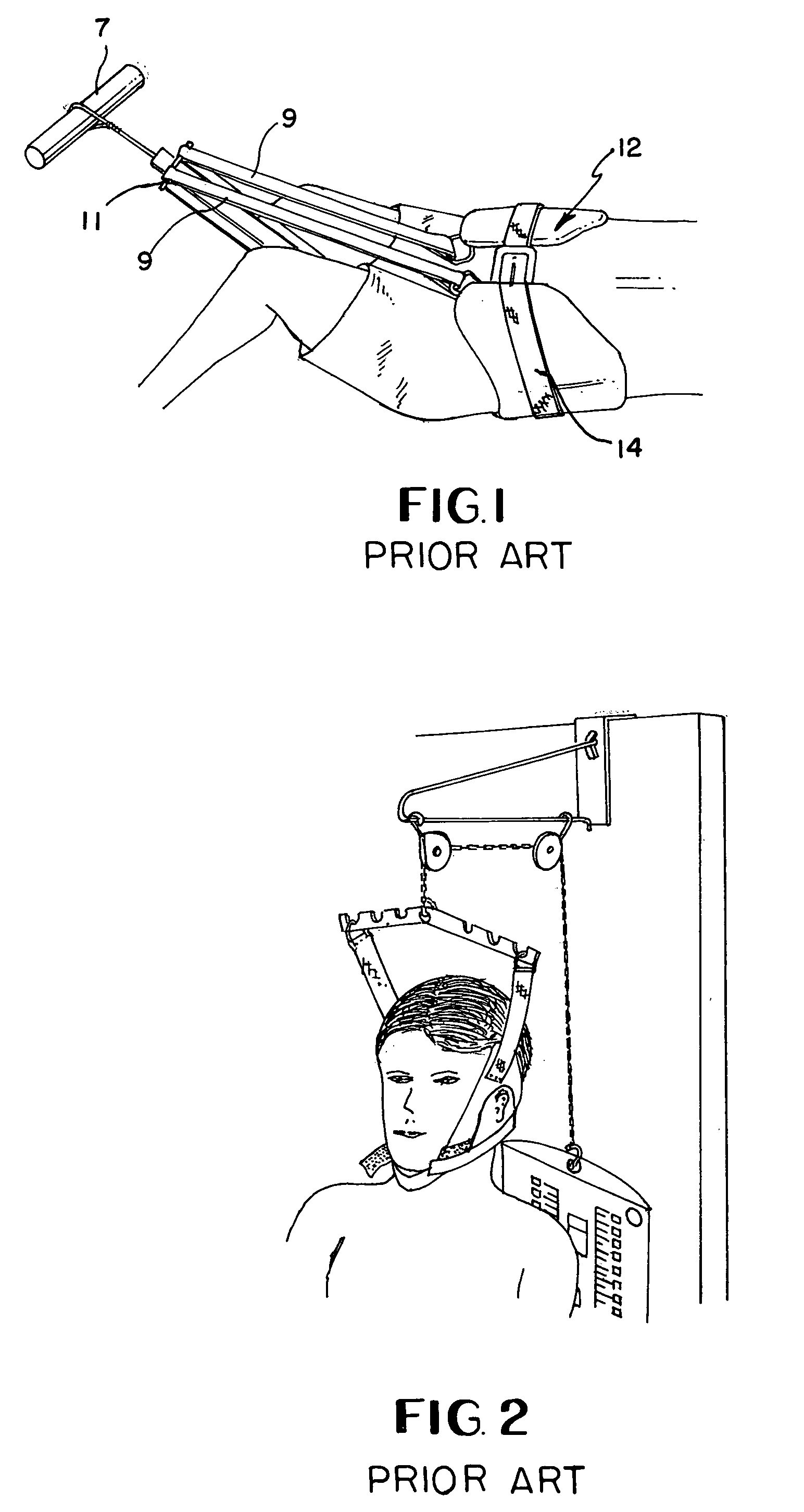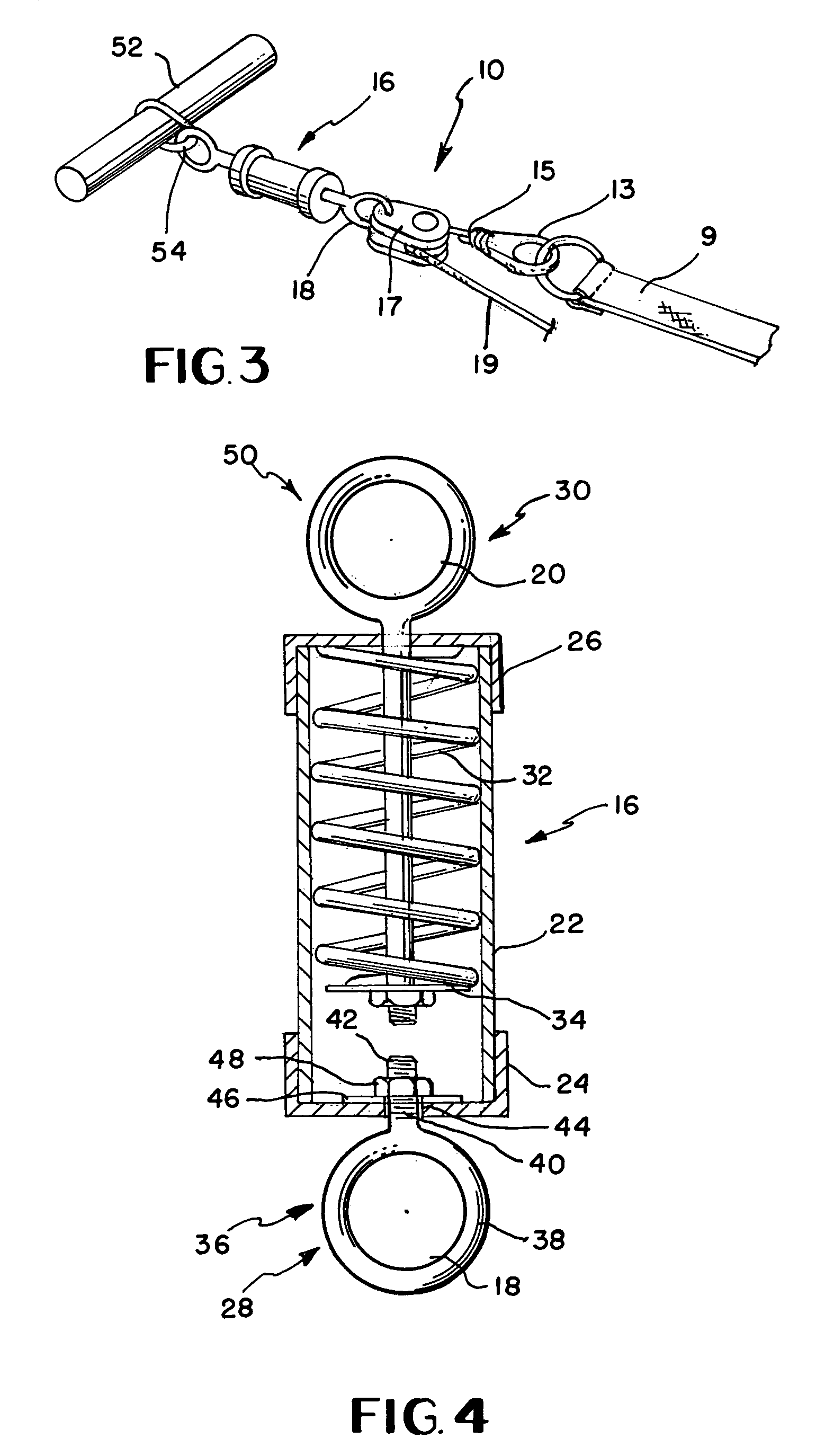Traction method and device
- Summary
- Abstract
- Description
- Claims
- Application Information
AI Technical Summary
Benefits of technology
Problems solved by technology
Method used
Image
Examples
Embodiment Construction
[0026]Referring to FIG. 1, a typical prior art lumbar traction device and its use is illustrated. The device includes a pelvic harness 12 which is available from several vendors. The pelvic harness 12 is placed about the waist of the person and the belt strap(s) 14 connected as illustrated in FIG. 1. Traction straps 9 typically connect the pelvic harness 12 to a force applicator, illustrated as a fixed support 7 in FIG. 1. The patient either pushes away from the force applicator or the force applicator exerts a force on the patient so that traction is applied to the lower portion of the patient's spine.
[0027]Instead of connecting the pelvic harness 12 to a spreader bar 11 as is illustrated in FIG. 1, the design disclosed herein connects the traction straps 9 of the pelvic harness 12 to a clip 13 as illustrated in FIG. 3. However a spreader bar could also be utilized, if so desired. The clip 13 may be a carabiner as is often utilized in climbing, or other appropriate connecting devic...
PUM
 Login to View More
Login to View More Abstract
Description
Claims
Application Information
 Login to View More
Login to View More - R&D
- Intellectual Property
- Life Sciences
- Materials
- Tech Scout
- Unparalleled Data Quality
- Higher Quality Content
- 60% Fewer Hallucinations
Browse by: Latest US Patents, China's latest patents, Technical Efficacy Thesaurus, Application Domain, Technology Topic, Popular Technical Reports.
© 2025 PatSnap. All rights reserved.Legal|Privacy policy|Modern Slavery Act Transparency Statement|Sitemap|About US| Contact US: help@patsnap.com



